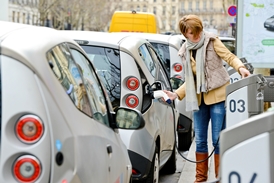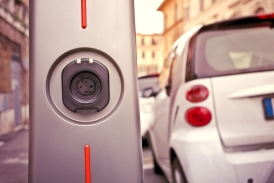Cars: is the future green?
2016 could be the year of the electric vehicles: incentives and technological research will decide the future of the go green movement
2016 could be the year of the electric vehicles: incentives and technological research will decide the future of the go green movement

Mass mobility will most likely become subject of rapid changes. According to the latest developments, electric vehicles will be the protagonists of the new mobility. But can they replace the cars with internal combustion engine?
This trend reversal is primarily due to the environmental impact - the go-green movement, which is becoming more and more popular after dieselgate - and secondly by the need to find an alternative to fossil fuels.
However, there is criticism on this type of car, particularly concerning the price: electric cars end up being a niche product that only wealthy people will be able to afford. But soon things could change. Of course, cost estimates vary widely, making it tough to determine just how much lower they must go before electric vehicles with long ranges can be really affordable. But some recent studies are optimistic.

For example, a 2015 peer-reviewed study led by Bjӧrn Nykvist and Måns Nilsson - two colleagues of the Stockholm Environment Institute – compared more than 80 estimates reported between 2007 and 2014 and determined that the costs of battery packs - the most expensive component of an electric car - are “much lower” than widely assumed by energy-policy analysts.
Nykvist and Nilsson concluded that batteries appear on track to reach $230 per kilowatt-hour by 2018. And if batteries fall as low as $150 per kilowatt-hour, this could lead to “a potential paradigm shift in vehicle technology”.
Of course, criticism of electric cars doesn’t only concern the price. One of the first challenges is the driving range. Some electric vehicles, in fact, can go as far on a charge as a traditional car travels on a tank of gas. But they come at a steep price. An example is the Tesla Model S, which according to the U.S. Environmental Protection Agency can go around 265 miles per charge, has a base price of $80,000. While a Nissan Leaf - with base price of $29,000 - can travel only around 84 miles per charge.

A significant problem, which, however, could be reduced by new technologies such as the motor developed by the Nanyang Technological University and the German Aerospace Centre with the purpose of increasing the range of electric vehicles by 15 to 20 percent.
Data analysis is another aspect that could contribute to increase performance, helping electric cars drivers to plug in less frequently, without fearing to run out of gas. This is the outcomes of the North Carolina State University researchers, those who developed the software that analyzes the amount of energy required to reach a driver’s destination when “real-time conditions like traffic, weather, driving behavior, and the remaining charge in the battery are taken into account”.
Similarly, the autonomy could be increased thanks to a new navigation tool, like the one developed by engineers at the University of California, Riverside. Using real-time information about traffic flow and factoring in road type and grade it would be possible to calculate the most battery-friendly trip, with energy savings of 25 or even 51 percent.

Finally there’s the idea of energy panels. Some researchers, mostly Australian, and US, developed body panels that can power cars. They hope “that one day a car could be entirely powered by supercapacitors that could store more energy than a lithium-ion battery and run for more than 300 miles”. But first the researchers would have to discover the right materials in order to increase the charge these supercapacitors can store, and also a new way to produce the graphene films quickly enough for mass production.
In conclusion, the scandal of rigged tests on Volkswagen diesel vehicles certainly doesn’t mean the end of diesel-use, nevertheless it certainly accelerated the decline, paving the way for the revolution of electric and hybrid cars. There is still much to do in terms of incentives and technological research. And 2016 could become a decisive year for the car industry.
